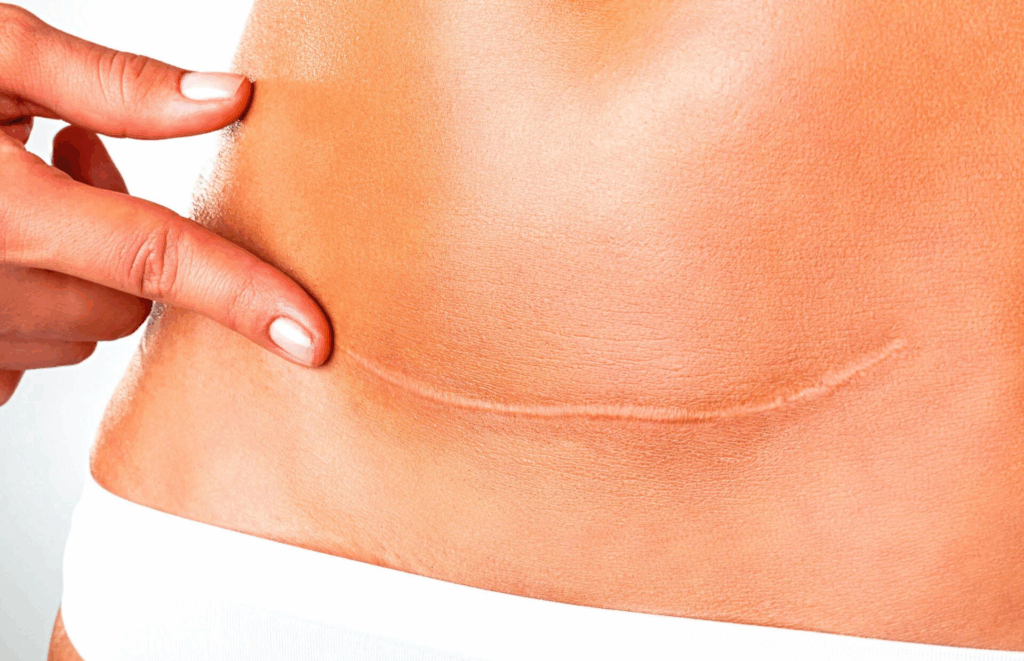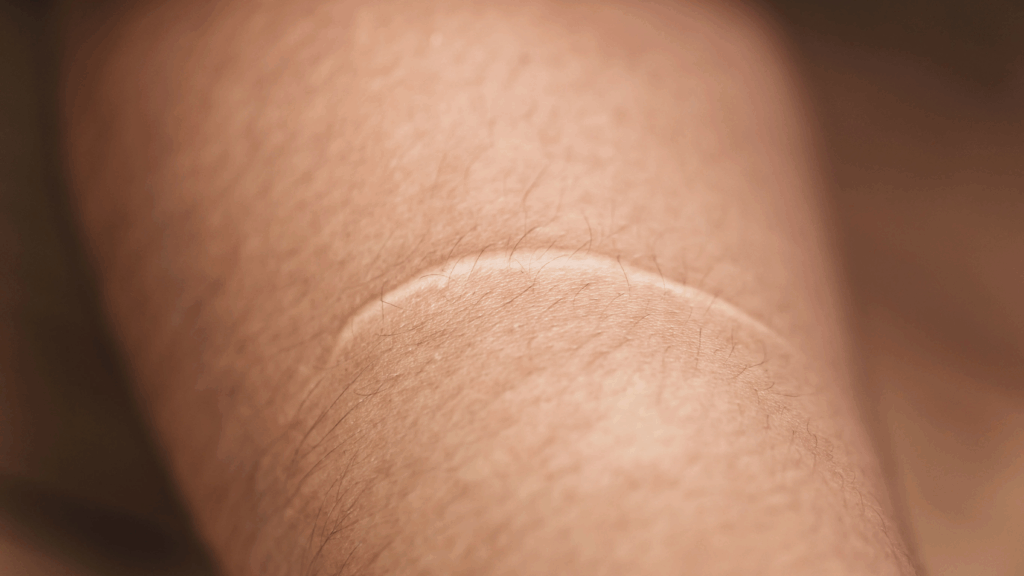Введение
Выбор правильного хирургического подхода к ревизии рубца имеет решающее значение для достижения оптимальных результатов. Характеристики и расположение рубца существенно влияют на процесс принятия решений. Понимание этих факторов помогает хирургам адаптировать свои методы к индивидуальным потребностям пациента.
Факторы, влияющие на заживление рубцов
Несколько ключевых факторов играют роль в определении наилучшего хирургического подхода к коррекции рубцов:
- Расположение шрама: Расположение рубца на теле влияет на выбор хирургической техники. Например, рубцы на лице могут потребовать более точных и менее инвазивных методов по сравнению с рубцами на туловище.
- Характеристики рубца: Тип, размер и глубина рубца являются важными факторами. Келоидные рубцы, например, требуют иных подходов к лечению по сравнению с гипертрофическими или атрофическими рубцами.
- Здоровье пациента: Общее состояние здоровья и история болезни пациента могут повлиять на план хирургического вмешательства. Такие состояния, как диабет или иммунные нарушения, могут потребовать дополнительных мер предосторожности.
Сравнение хирургических подходов
Различные хирургические методы предлагают различные преимущества и ограничения. Вот сравнительный обзор:
| Хирургический метод | Преимущества | Ограничения |
|---|---|---|
| Иссечение | Эффективен для удаления небольших, отдельных шрамов. | Может оставить новый шрам; не подходит для больших шрамов. |
| Z-пластика | Уменьшает натяжение и видимость рубцов | Может быть сложным и трудоемким |
| W-пластика | Разрушает линейные рубцы, делая их менее заметными | Может не подходить для всех типов рубцов. |
| Лазерная терапия | Неинвазивный, уменьшает покраснения и стимулирует выработку коллагена | Может потребоваться несколько сеансов; эффективен не для всех типов рубцов. |

Понимание шрамов: типы и характеристики
Рубцы являются естественной частью процесса заживления, но понимание их типов и характеристик имеет решающее значение для определения наилучшего хирургического подхода. Различные типы рубцов могут указывать на различные основные состояния и процессы заживления, которые могут существенно повлиять на выбор хирургических методов.
Гипертрофические рубцы
Гипертрофические рубцы приподняты, красны и часто зудят. Они возникают, когда организм вырабатывает слишком много коллагена в процессе заживления, что приводит к образованию толстого, приподнятого рубца, который остается в пределах границ исходной раны. Эти рубцы могут быть неудобными и вызывать эстетические проблемы.
Келоидные рубцы
Келоидные рубцы похожи на гипертрофические рубцы, но выходят за пределы исходных границ раны. Они вызваны перепроизводством коллагена и могут быть намного больше первоначальной травмы. Келоиды чаще встречаются у людей с более темным тоном кожи и могут быть сложными для лечения из-за их тенденции к рецидиву.
Варианты лечения келоидных рубцов
| Уход | Описание | Эффективность |
|---|---|---|
| Инъекции кортикостероидов | Уменьшить воспаление и уменьшить шрам | Умеренный |
| Криотерапия | Замораживает рубцовую ткань, уменьшая ее размер | Высокий |
| Лазерная терапия | Уменьшает покраснение и разглаживает шрам | От умеренного до высокого |
Атрофические рубцы
Атрофические рубцы выглядят как вдавленные или ямчатые следы на коже. Они возникают, когда основные структуры, поддерживающие кожу, такие как жир или мышцы, теряются. Эти рубцы часто встречаются при таких состояниях, как акне, и их может быть трудно лечить из-за их глубины.
Шрамы от контрактуры
Рубцы от контрактур возникают в результате значительной потери ткани, часто из-за ожогов. Они заставляют кожу натягиваться и стягиваться, что может ограничивать движение и даже влиять на мышцы и нервы. Эти рубцы часто требуют хирургического вмешательства для улучшения функции и подвижности.
Хирургические подходы к рубцам от контрактуры
| Хирургическая техника | Описание | Эффективность |
|---|---|---|
| Пересадка кожи | Пересадка здоровой кожи из другой области | Высокий |
| Расширение тканей | Растягивает окружающую кожу, чтобы закрыть шрам. | От умеренного до высокого |
| Z-пластика | Переориентация рубца для уменьшения напряжения | Высокий |
,
Заключение
Подводя итог, можно сказать, что коррекция рубцов — это многогранный процесс, требующий персонализированного подхода для достижения наилучших результатов. В этой статье мы рассмотрели различные методы, от хирургических вмешательств до неинвазивных методов лечения, каждый из которых предлагает уникальные преимущества и соображения.
Важно понимать, что ни один метод не подходит для всех случаев. Такие факторы, как тип рубца, его расположение, общее состояние здоровья пациента и индивидуальные предпочтения, играют важную роль в определении наиболее эффективного плана лечения.
Важность консультации с квалифицированным специалистом в области здравоохранения невозможно переоценить. Их опыт поможет вам выбрать доступные варианты, приняв обоснованное решение, которое будет соответствовать вашим конкретным потребностям и целям.
В конечном итоге индивидуальный подход к коррекции рубцов гарантирует, что лечение будет подобрано с учетом вашей уникальной ситуации, что максимально увеличивает шансы на успешный результат и улучшение качества жизни.
,
Часто задаваемые вопросы
В этом разделе рассматриваются распространенные вопросы, связанные с коррекцией рубцов и лучшими хирургическими подходами.
Что такое коррекция рубцов?
Коррекция рубцов относится к хирургическим процедурам, направленным на минимизацию видимости рубцов, делая их менее заметными и более соответствующими тону и текстуре окружающей кожи.
Когда лучше всего проводить коррекцию рубцов?
Оптимальное время для ревизии рубца зависит от типа и размера рубца. Обычно рекомендуется подождать, пока рубец полностью не созреет, что может занять до года. Однако некоторые рубцы могут выиграть от более раннего вмешательства.
Каковы различные типы процедур по коррекции рубцов?
| Процедура | Описание | Лучшее для |
|---|---|---|
| Z-пластика | Хирургическая техника, при которой рубец перемещается так, чтобы он стал менее заметным. | Линейные рубцы |
| Пересадка кожи | Подразумевает пересадку здоровой кожи с одного участка тела на пораженный рубцами участок. | Большие, глубокие шрамы |
| Расширение тканей | Процедура, при которой под кожу вводится устройство, похожее на баллон, для растягивания и роста новой кожи. | Шрамы от ожогов |
| Лазерная терапия | Использует лазерную технологию для уменьшения покраснений и улучшения текстуры рубцов. | Гипертрофические и келоидные рубцы |
Каковы риски и осложнения при коррекции рубцов?
Как и любая хирургическая процедура, ревизия рубцов несет в себе такие риски, как инфекция, кровотечение и побочные реакции на анестезию. Конкретные риски включают изменения чувствительности кожи, плохое заживление ран и возможность рецидива или появления новых рубцов.
Откройте для себя опыт доктора Эбру Окьяй, вашего доверенного лица. дерматолог в Анталия. Если вы хотите решить медицинские проблемы с кожей или улучшить свою естественную красоту с помощью косметических процедур, доктор Окьяй здесь, чтобы помочь. Благодаря индивидуальному уходу и передовым методикам достижение ваших целей по уходу за кожей никогда не было таким простым.
